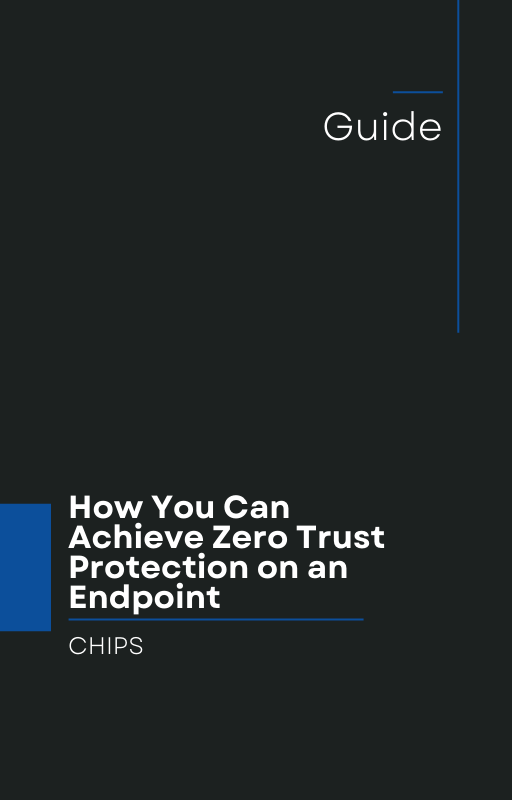Ransomware is evolving. A recent article from Cyber Security News reports that the ransomware group dubbed “Beast” is not only infiltrating networks but actively scanning for open SMB ports to spread laterally from a compromised system. Cyber Security News
Let’s unpack what this means for your business and how you can respond — not with the old “detect and respond” mindset, but by moving to true endpoint protection based on isolation and containment.
The Beast is growing
According to the article by Tushar Subhra Dutta, the Beast ransomware group “operates a distributed partnership model” and has already targeted organisations in the United States, Europe, Asia and Latin America across sectors including manufacturing, construction, healthcare, business services and education.
What makes Beast especially dangerous:
-
After the initial breach it doesn’t stop at file encryption. Instead it “actively scans for accessible SMB ports within compromised systems, allowing it to traverse network infrastructure and establish footholds across organizational environments.”
-
This lateral-movement strategy makes it very effective in enterprise environments “where network shares remain inadequately segmented or monitored.”
For business owners this means: one compromised endpoint is no longer a contained incident, it becomes a pathway for network-wide disaster.
Why the traditional “detect and respond” model fails
For years many organisations have leaned on endpoint detection & response (EDR) tools, signature-based antivirus, and monitoring tools that raise alerts when suspicious activity occurs. But when you are dealing with ransomware that scans SMB ports, moves laterally, and perhaps uses living-off-the-land techniques, this model shows its limitations.
Here’s why:
-
By the time a detection alert fires, the attacker may already have traversed multiple systems, escalated privileges, and encrypted data.
-
Signature-based tools do not catch new variants, zero-day exploits or adversaries using clever obfuscation.
-
Monitoring and response means you’re playing reactively rather than preventively.
In short: detecting the threat doesn’t stop its spread—it only notifies you after the fact.
A better approach: Isolation and Containment
The time has come for a different paradigm. Instead of “detect and respond”, the winning strategy is “isolate and contain”.
What this means in practice:
-
When a malicious or untrusted process executes, it is contained in its own boundary so that even if it runs, it cannot touch critical system files, network shares or other endpoints.
-
If a process tries to move laterally, access SMB ports it shouldn’t, load unauthorized modules or modify system resources, it is isolated and prevented from doing so.
-
The focus shifts from recognising the malware (which may be new, undetected or cleverly disguised) to blocking the actions it must perform to succeed.
This model dramatically reduces the “blast radius” of any compromise and forces attackers to operate in smaller, contained footholds rather than sweeping across your network.
How AppGuard enables this shift
AppGuard is a proven endpoint protection solution with a 10-year track record now available for commercial use. It’s built specifically for this isolation and containment model.
Key features include:
-
It enforces controls such as launch control, containment and isolation — stopping malicious actions rather than depending on detection of known malware.
-
It blocks behaviours malicious software must perform (code injection, DLL sideloading, unauthorized writes, lateral movement) without requiring signatures or known threat patterns.
-
It is light on resources and can run for months or even years without requiring constant policy updates or massive alert volumes.
In the case of Beast ransomware: even if an attacker had compromised an endpoint and attempted to scan SMB ports or spread across network shares, AppGuard’s containment and isolation layer would have blocked the malicious lateral movement, thwarting the attempted propagation from the outset.
Why business owners should care now
For business leaders, this matters for three major reasons:
-
Network risk is escalating: As shown by Beast and other major incidents, lateral movement is the killer in ransomware. Protecting one machine is not enough.
-
Resources are constrained: Investigations, alerts, incident response are expensive. If you can prevent rather than respond, you save time and money.
-
Reputation and uptime are everything: A ransomware event that spreads across your network can disrupt operations, damage reputation and incur massive recovery costs.
If you remain reliant on “detect-and-respond”, you’re waiting for the breach alarm to sound—at which point the attacker may already be deep. With AppGuard you flip the equation: the breach alarm might never ring, because the attacker cannot spread.
Call to action
Don’t wait until your organisation appears in the headlines. Talk with us at CHIPS today about how you can move beyond detection and response and adopt isolation and containment with AppGuard.
Let us help you protect your endpoints proactively—before the next breach finds you.
Contact us now and let’s safeguard your business the smart way.
Like this article? Please share it with others!

November 8, 2025

Comments